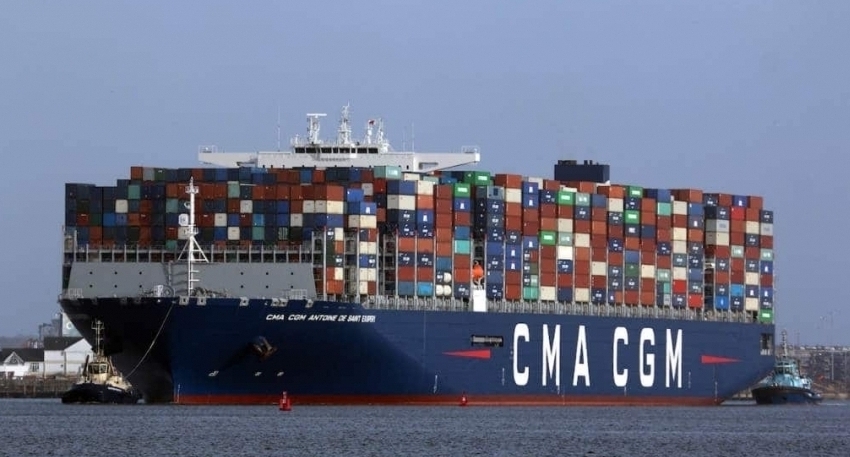AFRICA CEO FORUM, Okan publish report on transforming ports
AFRICA CEO FORUM and the strategy consulting and financial advisory firm Okan published a report on the African logistics sector.

November 04, 2020: For the second year in a row, the AFRICA CEO FORUM and the strategy consulting and financial advisory firm Okan published a report on the African logistics sector. This year’s edition, entitled “Africa’s ports: fast-tracking transformation”, gives an overview of the sector’s strengths and weaknesses while providing a list of six recommendations that have the power to turn Africa’s hubs into global giants.
The Covid-19 crisis has led to significant upheaval in the transport and logistics sectors. One of the most major impacts is no doubt the decline in trade flows, taking the form of a 30 to 40 percent decrease in traffic for certain African ports.
These ill winds come on the back of two decades of unprecedented growth in investment and competitiveness in the continent’s port sector. Totalling $1.2 billion between 1990 and 2004, private investment in Africa’s port sector grew by a factor of 3, reaching $15.2 billion between 2005 and the first half of 2019.
Such investment enabled many African ports to expand their handling capacity, modernise their infrastructure and, thereby, rise in the ranks (Tanger Med, Port of Djibouti, etc.) by positioning themselves as leading players. This is particularly true of Tanger Med, which had an explosive rise, going from 105th to 25th place globally in terms of connectivity in the space of 10 years.
These success stories, while encouraging, should not gloss over the sector’s structural issues, such as its infrastructure deficit, high operating costs and difficulties securing and diversifying investments. The report produced by the AFRICA CEO FORUM in partnership with Okan puts forward six recommendations that could solve these problems and decisively modernise port logistics in Africa.

Recommendations #1 and #2: Invest wisely to end the vicious cycle of operational inefficiencies
Despite greater investment, Africa’s port sector is still behind on the modernisation front. There are many reasons for this, including poor project structuring, too much investment all at once and solutions that do not address problems adequately. To fix these issues, the first objective to pursue is to identify and eliminate the main bottlenecks. This can be accomplished by investing in modernising existing infrastructure, as demonstrated by the Autonomous Port of Dakar, which developed an investment plan comprising 400 to 500 parking spaces (construction ended in December 2019) and a vehicle booking system to manage lorry traffic flows. A second solution is to use new technologies, such as the Port Call Optimisation application, and task automation to streamline operations. These kinds of tools will help mitigate over time costly inefficiencies and the complexity of port operations.
Recommendations #3 and #4: leveraging private players
At a time when African states are experiencing their first economic recession in 25 years, public-private partnerships are emerging as a particularly appropriate source of financing. Such is the report’s third recommendation. However, involving private players will only happen provided that ambitious governance reform is implemented, e.g., establishing clear roadmaps, explicitly defining the role of stakeholders and, above all, setting up stable, transparent legal frameworks. Morocco’s landlord port model, which perfectly meets all these requirements, could serve as an example in this regard.
Recommendations #5 and #6: streamlining, connectivity and diversification
Streamlining port-city interactions and improving connectivity with hinterlands are essential to boosting port sector competitiveness. Indeed, the rapid urbanisation of Africa’s cities has resulted in congestion around various ports. For instance, it takes two hours to travel from the Port of Kribi to the Port of Douala, and then two additional hours to reach Douala’s city limits. One of the solutions the report proposes is to develop multimodal logistics corridors (road, rail and inland waterway transport), as they would better connect ports to inland areas while also reducing operating costs.
The report’s final recommendation involves modernising the non-container segment to ensure the continent’s full development. On its own, the container segment won’t be able to meet Africa’s needs, as the continent’s vast natural resources require special infrastructure in order to be exported. Subsequently, exploring other solutions such as bulk, roll-on/roll-off and grain terminals would help diversify trade and turn economies in the direction of a more resilient and less dependent model. For example, the construction of the Saldanha Iron Ore Terminal in South Africa has resulted in the country increasing its iron exports by a factor of almost 3 since 2005.
Read the full report here.


